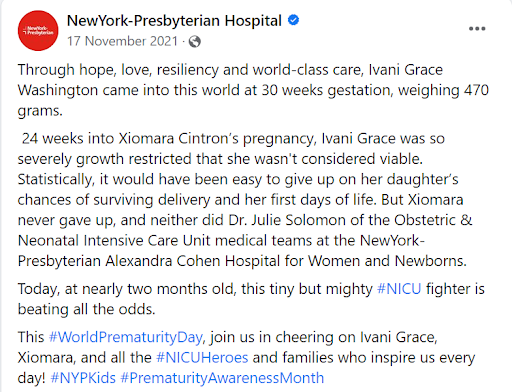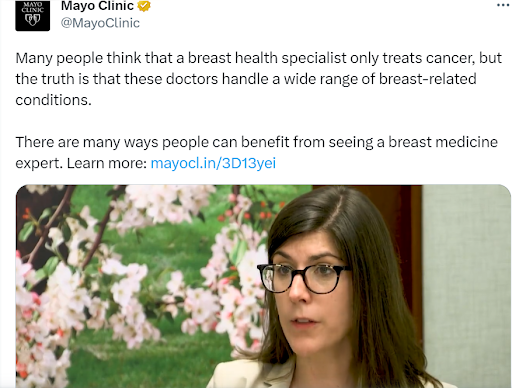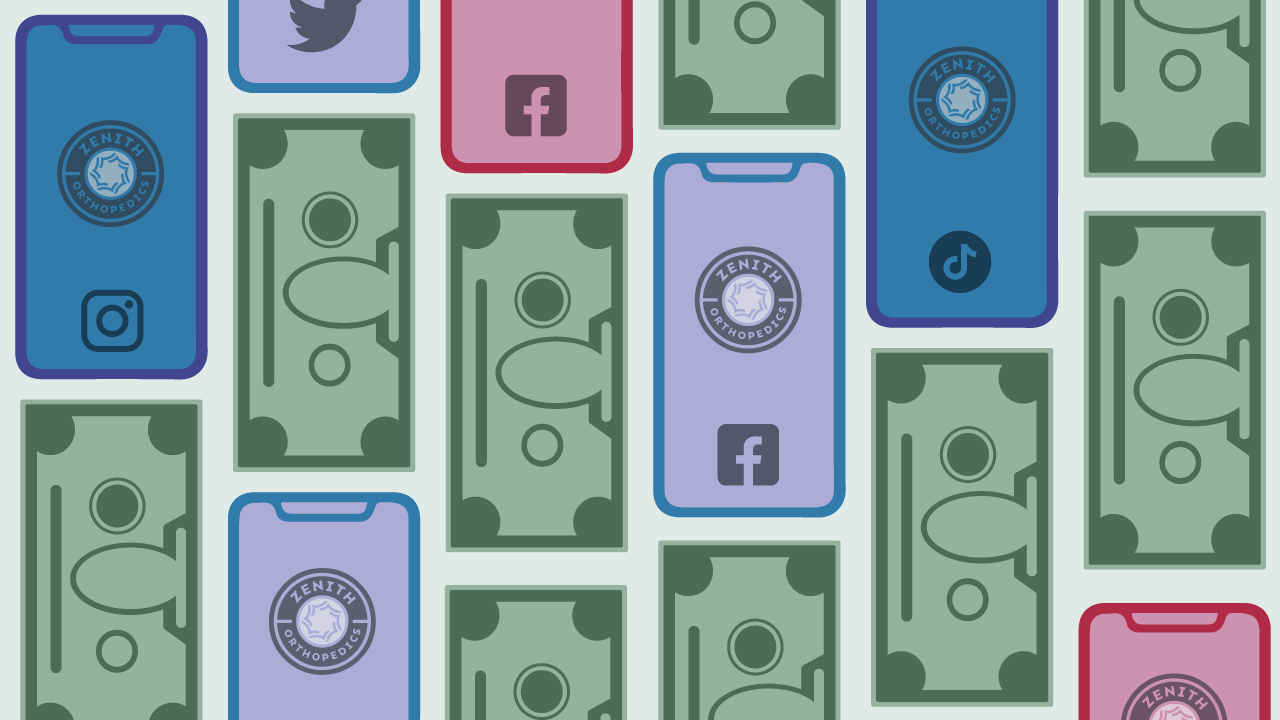In today’s healthcare landscape, where patients are becoming more informed and selective about where they receive care, building a solid brand and enhancing brand awareness are critical. And, with 72.3% of the total US population actively using social media, it’s clear that these platforms provide a vital and powerful tool for connecting with potential patients.
While other industries rapidly embraced social media platforms to connect with their customers and cultivate loyal brand followers, the healthcare industry has taken a more careful approach. Concerns over patient privacy and data security have made many healthcare organizations hesitant about engaging fully on social media platforms. However, over the past few years, social media marketing for healthcare has evolved considerably and is reshaping how we interact with and access health information online.
Whether it’s through the power of patient stories, combating misinformation, or educating the public on important health matters, smartly-targeted, well-crafted social media campaigns can drive visibility, build trust, and ultimately shape your organization’s reputation in the minds of patients. The key lies in using paid social media advertising effectively to build brand awareness, even when prospective patients aren’t actively looking for care.
The Potential of Paid Social Media Advertising in Healthcare
Social media opens up a range of opportunities for you. It can act as a platform for raising awareness, offering health education, dispelling myths, and even showcasing the transformative patient journeys that unfold within the corridors of hospitals and clinics. More importantly, it is a powerful medium for establishing connections and building trust with the public, a factor that plays a crucial role in shaping the perception of your healthcare brand.
So, the question here isn’t whether to use paid social media advertising, but how to harness its power effectively while respecting the professional and legal boundaries inherent to the industry. Let’s explore how various healthcare organizations are using it, and draw insights on how you can benefit from social media both for your healthcare organization and the public you serve.
Focus on the Patient’s Experience
Going behind the scenes and highlighting the patient experience can be a profound way to connect to your followers. The journeys your patients go through are full of inspiring stories waiting to be told, and you’re in a unique position to bring these stories to life while also highlighting the expertise and services your organization provides.
New York Presbyterian Hospital has built an entire video marketing strategy around this concept. For example, Facebook posts showcasing the incredible neonatal care babies receive and how it helps them triumph over the odds are incredibly moving raw accounts of patients as well as doctors and nurses who are at the public’s service.
 So, how can you put this into practice to boost your brand awareness using paid social media advertising?
So, how can you put this into practice to boost your brand awareness using paid social media advertising?
Start by creating a series of videos or posts about your patients’ success stories. Show off what you do and the journey your patients take, and don’t forget to celebrate their victories. You could even include the perspectives of your medical team to round out the story. Bear in mind that you’ll need your patients’ explicit consent to create and publish these stories and make sure to include your legal team in this process to ensure the patients in question are on board with your campaign and that you’re not violating HIPAA regulations.
To get these posts seen by more people, consider using paid promotions. Social media platforms offer all sorts of targeted advertising options that can help your stories reach more people who fit the profile of your ideal patients. You could also encourage your patients to share their own experiences and tag your organization in their posts. This kind of user-generated content can really widen your reach and add another layer of authenticity to your brand.
Prevent Misinformation
Misinformation is a real problem on social media, with a study indicating that almost 87% of users come across false health information. But this challenge also presents an opportunity and trusted healthcare organizations like the American Academy of Pediatrics have stepped up to offer reliable, evidence-based advice, which in turn strengthens their brand’s reputation.
You can also use social media platforms to deal with health myths and promote accurate, reliable information, and boost your posts with paid social media advertising to make sure they reach more people. If there’s a hot topic or common misconception, don’t shy away from it — address it head-on with an ad campaign to position your brand as a trusted voice in a sea of misinformation.
 Educate the Public
Educate the Public
Alongside fighting the spread of misinformation, healthcare social media marketing content is an effective educational tool. Keeping up with research and helping the public understand its relevance to current practice goes a long way toward establishing your credibility on social media.
Take, for example, the Mayo Clinic’s success in harnessing the power of various social media platforms. Regularly sharing medical research findings, health tips, and advice, they’ve made their online presence a go-to source for many seeking reliable health information. Their dedicated YouTube channel offers a rich mix of expert interviews, patient stories, and health topic explainers. These not only educate but showcase their medical expertise, building trust among viewers. And their Twitter feed, full of links to user-friendly articles, blogs, and research papers, brings complex medical topics within everyone’s understanding.
 On the other hand, you can use social media to address research findings and illustrate their significance to everyday health. You can also transform intricate health topics into understandable posts or short videos, or tackle larger topics with themed campaigns that keep your audience engaged over several weeks or months. Plus, with paid social media advertising, these valuable educational pieces are sure to reach those who need them most.
On the other hand, you can use social media to address research findings and illustrate their significance to everyday health. You can also transform intricate health topics into understandable posts or short videos, or tackle larger topics with themed campaigns that keep your audience engaged over several weeks or months. Plus, with paid social media advertising, these valuable educational pieces are sure to reach those who need them most.
Foster Preventative Care
One of the remarkable ways healthcare organizations can make a significant impact on social media is by raising awareness, particularly around preventative care. Not only does this contribute to better health outcomes, but it also effectively markets the preventative services your organization offers. Take, for example, the World Health Organization’s campaign to end cervical cancer by promoting screenings for 70% of women around the world.
 Similarly, your healthcare organization can use social media platforms to advocate for preventative care. By running paid social media campaigns that emphasize the importance of early detection and prevention, you can inspire your followers to take advantage of your preventative services. These campaigns are also an excellent opportunity to team up with other healthcare organizations. Such partnerships can enhance the reach of your campaign, extending your audience and multiplying the impact, but also enhancing your brand awareness.
Similarly, your healthcare organization can use social media platforms to advocate for preventative care. By running paid social media campaigns that emphasize the importance of early detection and prevention, you can inspire your followers to take advantage of your preventative services. These campaigns are also an excellent opportunity to team up with other healthcare organizations. Such partnerships can enhance the reach of your campaign, extending your audience and multiplying the impact, but also enhancing your brand awareness.
Create a Community of Support
Social media platforms are online communities, and as such, they can be tools to create support for patients and their families. Even if your healthcare organization doesn’t have the bandwidth to support patient communities as part of its healthcare social media marketing strategy, you can act as a catalyst to connect people to resources. This approach is particularly helpful for hospitals and clinics that treat a large community of patients with chronic conditions and life-threatening diseases such as cancer.
For example, through confidence-inspiring web videos, the Dana-Farber Cancer Institute shows its personal approach to cancer treatment and state-of-the-art facilities. They also use an incredibly powerful campaign slogan: Right now you may have cancer, but what your cancer doesn’t know is — You Have Us. By sharing these videos on social media the cancer center embodies what it means to build trust and support with your target audience.
 Drawing from their example, your healthcare organization can use social media to create a similar supportive community for patients and their families. Share empathetic content, run paid campaigns promoting your support resources like support groups or counseling services, and encourage patients and their families to share their stories and offer support to others in similar situations. The combination of these actions can create a genuine, trusting community around your healthcare brand, fostering greater connection and trust with your target audience.
Drawing from their example, your healthcare organization can use social media to create a similar supportive community for patients and their families. Share empathetic content, run paid campaigns promoting your support resources like support groups or counseling services, and encourage patients and their families to share their stories and offer support to others in similar situations. The combination of these actions can create a genuine, trusting community around your healthcare brand, fostering greater connection and trust with your target audience.
Keep Your Healthcare Brand at the Forefront
The goal of brand awareness is simple — keep your brand on the top of patients’ minds, so that when they need care, they think of you first. How can paid social media advertising achieve this?
Social media serves as a virtual meeting place, perfect for engaging with patients at various stages of their healthcare journey, from potential leads to current patients, and those you wish to re-engage with. With its wide reach and interactive nature, social media provides an ideal platform to showcase your organization’s strengths, share impactful patient stories, dispel health misinformation, promote preventative care, and create supportive communities.
When used strategically, paid social media advertising can significantly boost brand awareness and solidify your place as a trusted authority in healthcare. By creating engaging, share-worthy content and striking a balance between conversational and insightful posts, you can drive engagement, encourage shares, and start conversations around your brand.
While the challenges of data security and patient privacy must be respected, the potential benefits are immense and to fully take advantage of paid social media advertising, you can rely on SocialClimb. With driven insights and automated patient acquisition, the platform allows you to target the right audience with personalized ads, enhancing both brand visibility and patient trust.
SocialClimb’s comprehensive analytics tool can gather and process demographic and behavioral data of your current and potential patients in a HIPAA-compliant manner. This allows you to understand better who your ideal patients are, what their needs and preferences are, and how you can reach out to them more effectively.
Also, the platform’s powerful automation capabilities enable you to launch effective ad campaigns without dedicating significant time or resources to the task while a robust reputation management system can help build and maintain your brand’s credibility.
Finally, the platform offers comprehensive tracking and reporting, allowing your organization to assess the performance of your paid social media advertising campaigns continually. These insights can guide future strategies and ensure your advertising efforts continue to improve and evolve in a HIPAA-compliant way.











